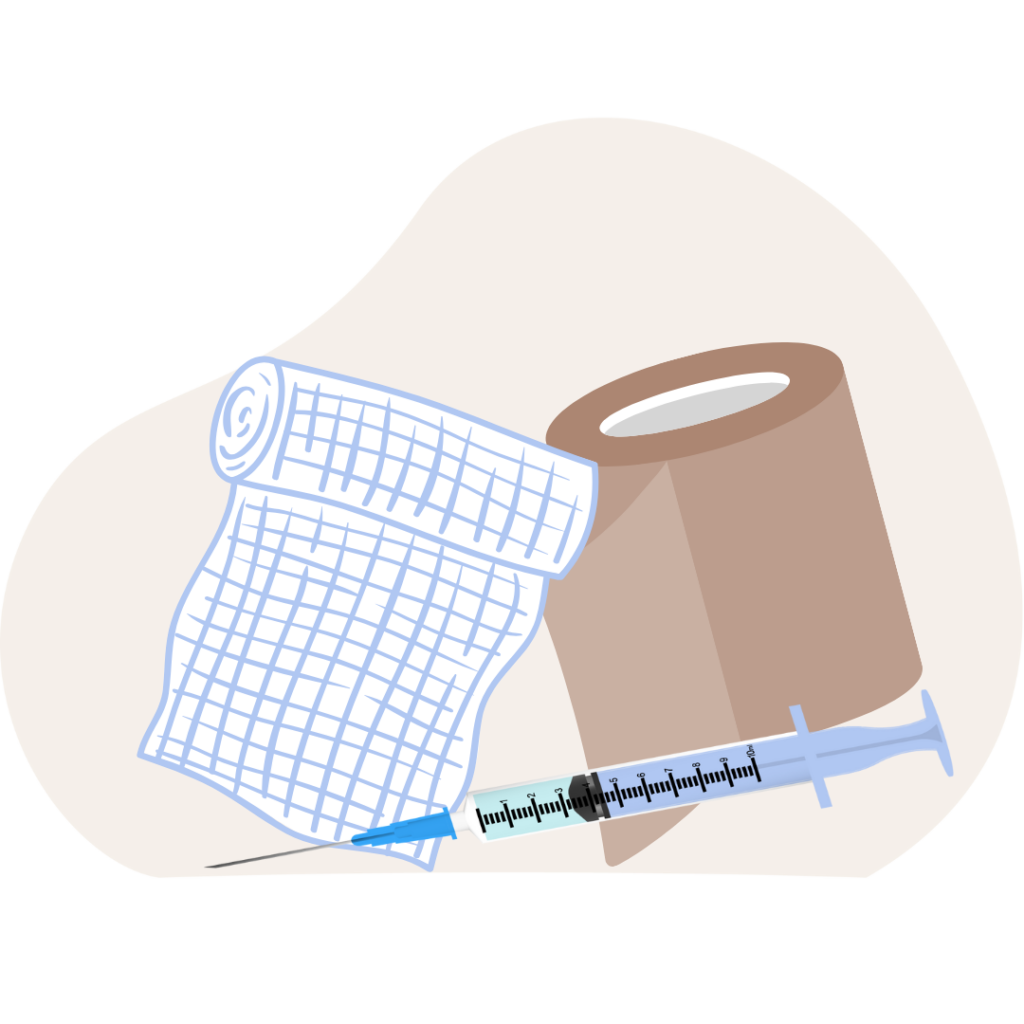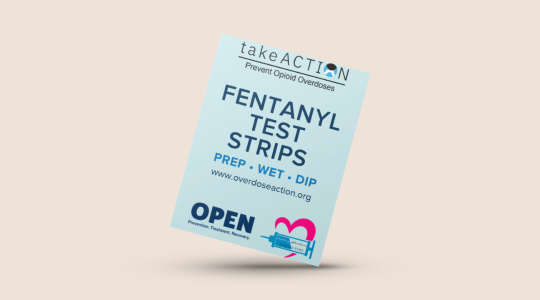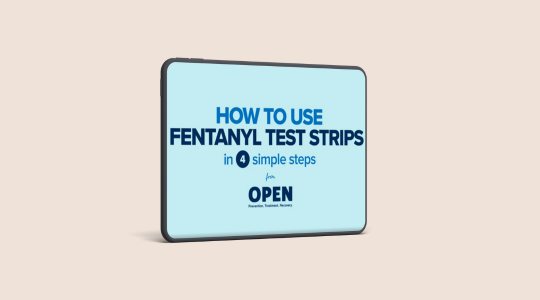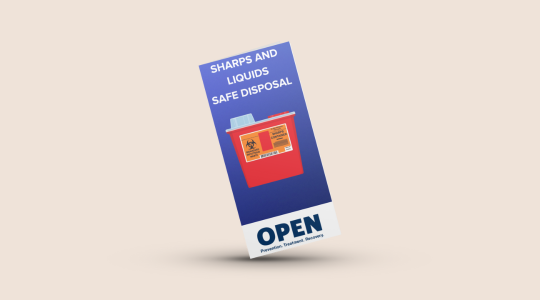Harm reduction is a strategy to engaging supporting people who use drugs (PWUD) and providing them with resources and education that can positively impact them and give them insight on when they may need to seek medical attention. Harm reduction can include drug supply testing supplies for fentanyl and xylazine, access to proper wound care materials, and safe syringe access. OPEN has many programs and educational resources that are designed to help communities provide access to harm reduction materials.

There is an unpredictable drug supply and people often don’t know what is in the drugs that they are using. Fentanyl and xylazine test strips allow for adjustments in drug use to prevent overdose or other harms.
Fentanyl is a synthetic opioid which is up to 50 times stronger than heroin (CDC). Fentanyl can be used on its own or co-used with other substances. Other unregulated drugs – such as heroin, cocaine, and methamphetamine – can be inadvertently cross-contaminated with fentanyl.
Fentanyl cannot be detected by taste, sight, smell, or touch, so Fentanyl Test Strips (FTS) are a critical tool to prevent fentanyl-related overdoses. FTS are easy to use and cheap to purchase. For more information about how to use fentanyl test strips, view this video and pocket guide.
Xylazine (“tranq”, “tranq dope”) is an animal tranquilizer that is not intended for human use (CDC). Xylazine has been found mixed into the illegal drug supply.
Side effects from xylazine include:
Because people who use drugs may not be aware that xylazine is in their drugs, xylazine test strips can provide important information to prevent xylazine-related complications.

Learn how to use fentanyl test strips to reduce risk of an overdose.
It is not clear why xylazine causes wounds. Wounds can appear anywhere on the body, regardless of the route of use.

| Cleansers | Topicals | Periwound Barriers |
| -Woven Gauze -Potable Tap Water -Normal Saline -Wound Cleansers -Vashe -Quarter strength Dakins Solution | -A&D, Vaseline -Medihoney -Polyhexamethylene biguanide -Silver hydrogel -Silver sulfadiazine -Mupirocin -Callagenase | -A&D -Dimethicone -Zinc Barrier Ointment -No Sting Skin Prep |
| Contact Dressings | Absorbent Dressings | Supportive Dressings |
| -Non-Occlusive Oil Emulsion -Nonadherent Pads -Occlusive Petrolatum -Alginate, CMC | -Foam -ABD Pad -Super Absorb Pad | -Rolled Gauze -Self-Adhesive Wrap -Elastic Bandage (Ace Wrap) -Netting, Sleeve |
Get medical care as soon as possible if you have wounds along with any of the following symptoms:
Go to the Emergency Room immediately if you have wounds along with any of the following symptoms:
Access to clean needles and syringes is important to prevent infections and other complications such as HIV and hepatitis. Syringe Services Programs are community-based programs that provide services such as linkage to substance use treatment, vaccination, testing, and education about overdose prevention and safer injection practices while also screening and testing for HIV and hepatitis.

Learn how to use fentanyl test strips to reduce risk of an overdose.

Learn how to use fentanyl test strips to reduce risk of an overdose.

Missed a webinar or want to go back and rewatch one? Visit our YouTube playlist to find our past webinars.

Learn how to safely dispose of needles, lancets, and liquid medications.